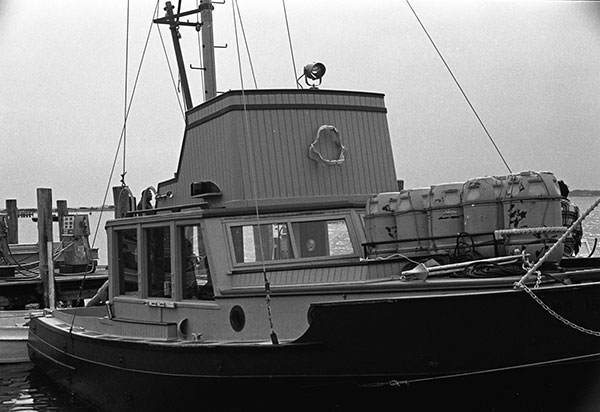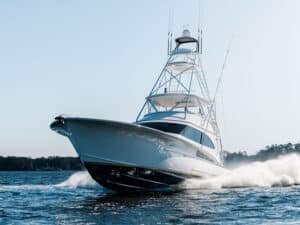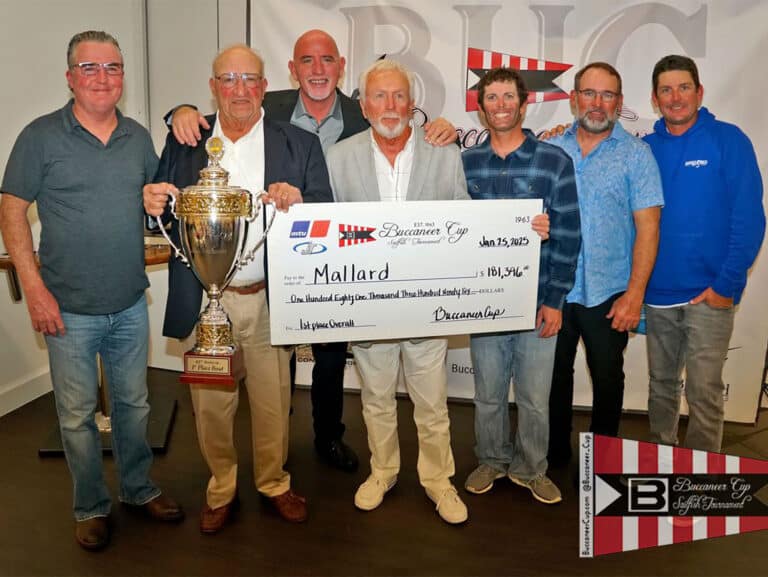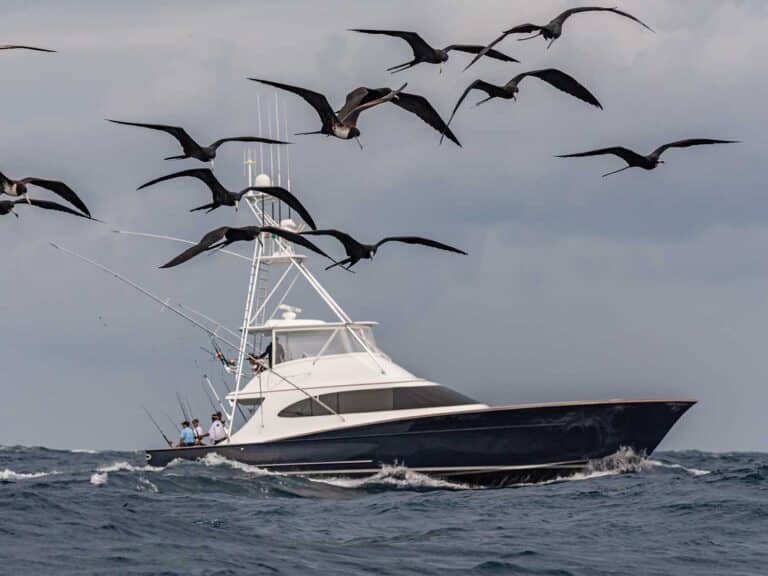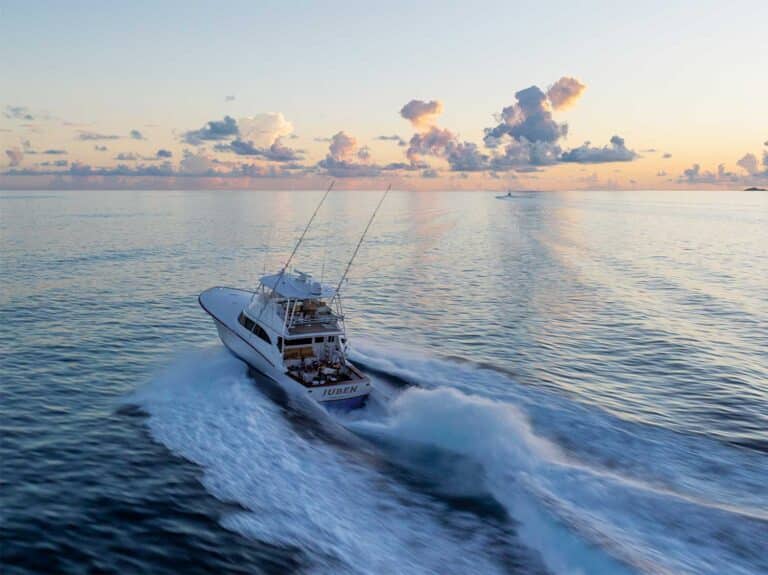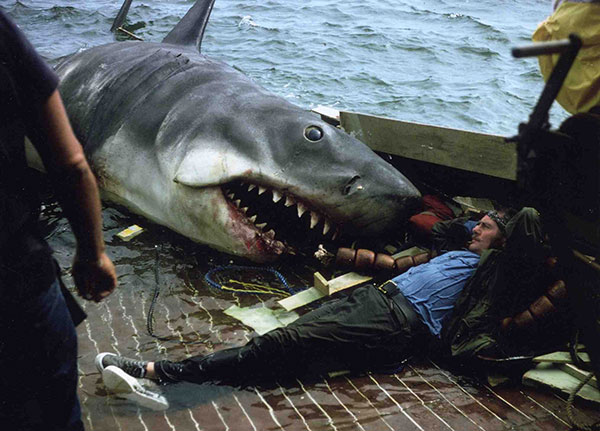
The Orca might be the most famous fishing boat in cinema. It relentlessly pursued a 25-foot porker, set the scene for scar stories and was owned by the saltiest captain on Amity Island. It also became one of the symbols of a new era in cinema — the summer blockbuster. It’s gone forever. We will never see Orca on the hunt again. And not due to the appetite of a 3-ton fish; looters and a lack of oversight doomed this film icon.
The film Jaws made many boys into fishermen, but it also kept kids away from the beach for a while. This movie, which introduced a completely new level of terror to children even taking a bath, also evolved into a never-give-up story of filmmaking. The film’s 27-year-old director, Steven Spielberg, was learning how to make a big movie on the fly and having to deal with an enormous amount of production problems due to the film’s nautical nature. Filmmaking around the ocean is not easy. As a result, Spielberg needed the help from the locals of Martha’s Vineyard, specifically those folks in and around the fishing village of Menemsha.
Spielberg hired locals as extras and some even got speaking parts or worked as part of the crew. One townie, in particular, can be considered the backbone of that local support.
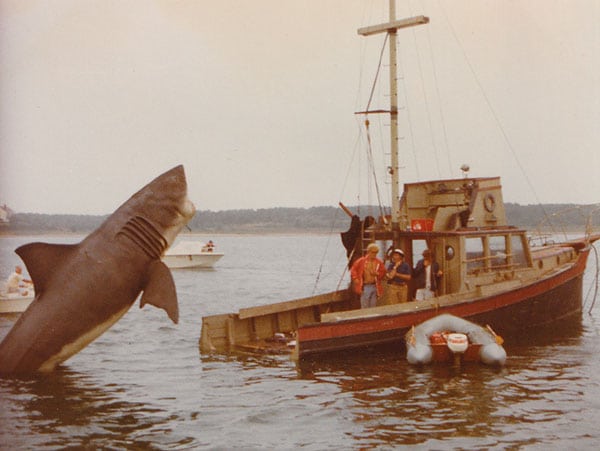
“Lynne Murphy arguably saved parts of the film production, more than any other local,” says Matt Taylor, author of Jaws: Memories from Martha’s Vineyard. The 292-page book that he and Jim Beller, a Jaws historian and collector, comprised is full of photographs and memories of the islanders during the shooting of the film.
Lynne Murphy was a local marine mechanic when Hollywood came to town. He was hired to assist with anything from towing the robotic shark to fixing the electronics on the underwater platforms for action scenes.
According to Taylor, during the rehearsals for towing the shark close to the Orca, Murphy would use a buoy in place of the Orca — to get the shark as close as possible without dinging the real boat until “action” was called. In watching the scene where Chief Brody is about to blow the hell out of the shark, there is an unintentional wake, which is actually caused by Murphy’s boat. That’s how close Murphy had to get to the Orca to make the shark look like it was actually coming at the boat.
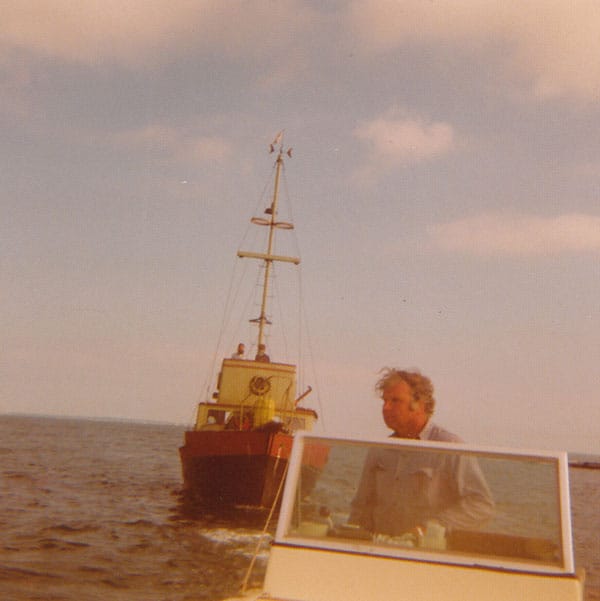
In 1974, production ended. As in some cases when a film wraps, props and equipment are sold on the spot. Murphy bought the fiberglass Orca replica for a dollar.
However, there were two Orcas used in the production of the film. The first was the operational Orca, which was purchased nearby in Marblehead, Massachusetts. It originally was used as a lobster boat under the name of Warlock. The production team revamped it with some paint and added a mast pulpit. It became known on set as Orca 1. This is the boat used in most of the regular fishing scenes. But when you see a boat that’s sinking or being destroyed, that’s Orca 2.
Orca 2 was created out of fiberglass that came from the mold made from the original boat. There was no motor attached and several breakaway sterns were built into the replica. In the infamous scene where the shark chomps on Quint as Chief Brody throws a scuba tank into the shark’s mouth — that’s Orca 2.
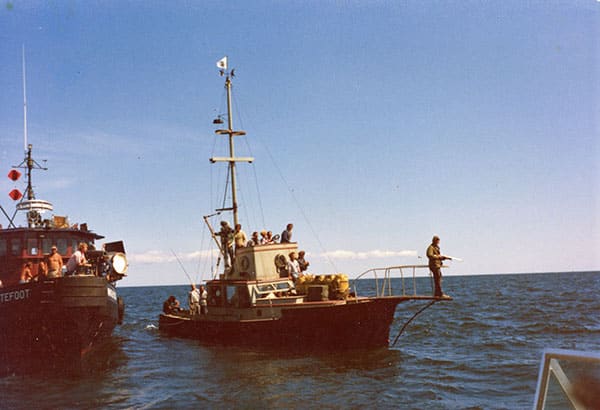
The production team shipped the Orca 1 back to Universal Studios in Hollywood, California. Taylor says that within a brief time, it was sold to a fisherman in Los Angeles. A year later, after the movie became a hit and was the first film to top $100 million, Universal Studios bought Orca 1 back from him — paying 10 times what they originally sold it for. It was then placed on the backlot studio tour near the Amity Island section of the ride. Taylor and a bit of Hollywood lore says that Spielberg would sneak onto the Orca during the night to think about the days of the Jaws shoot as well as mull over future ideas for his upcoming films.
“Apparently, Spielberg came one night to sit on Orca and it was gone,” says Taylor. “Some studio execs thought to get rid of it and chopped it up with chainsaws.”
Another legend, which Taylor heard as well, was that Orca was in such disrepair that Universal Studios planned to repair it, and while picking it up with a crane, the boat cracked in half.
Orca deserves a bit of mystery. Forever the idea that it may be out there somewhere, whether in some secret marina or in a someone’s garage — which is exactly where Murphy’s Orca 2 still sits in pieces.
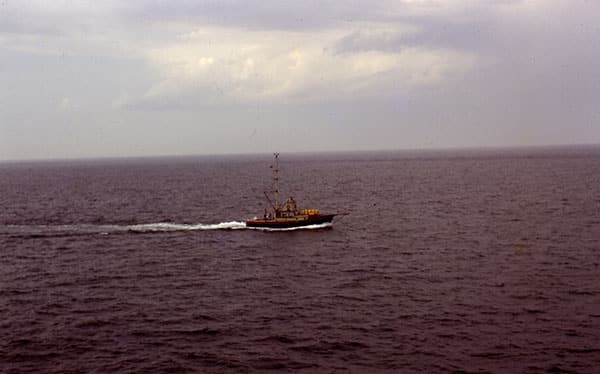
After first purchasing Orca 2, Murphy placed it on his privately-owned beach in Menemsha. It sat on the bank over 30 years, but withered down to sections because of rabid fans that wanted a piece of film history.
“The Murphys started to notice that pieces were disappearing,” says Taylor. “First, it was the pulpit, then the mast and then the fly bridge.”
In 2005, after several security issues, the Murphys decided to cut up the remains of the boat into a thousand 1-foot by 1-foot squares. These pieces were then included within the original limited edition of Jaws: Memories from Martha’s Vineyard.
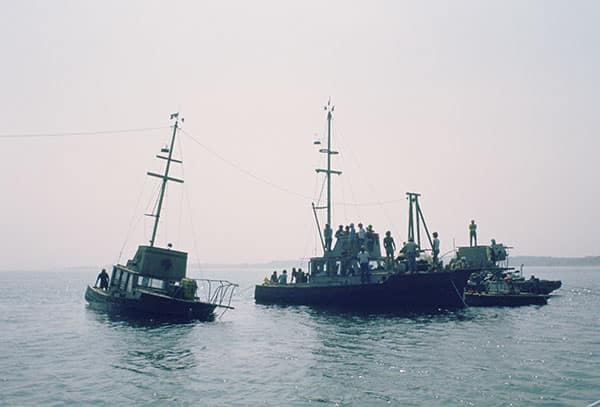
They are all sold out. Recently, one of these 1-inch squares sold on eBay for $1,850.
It’s a shame — both of these boats belonged in a museum. They became a piece of film history and deserved much better fates.
Orca is right up there with film’s other iconic symbols; Citizen Kane‘s Rosebud or The Wizard of Oz‘s__ ruby red slippers. The boat became lore on its way out.
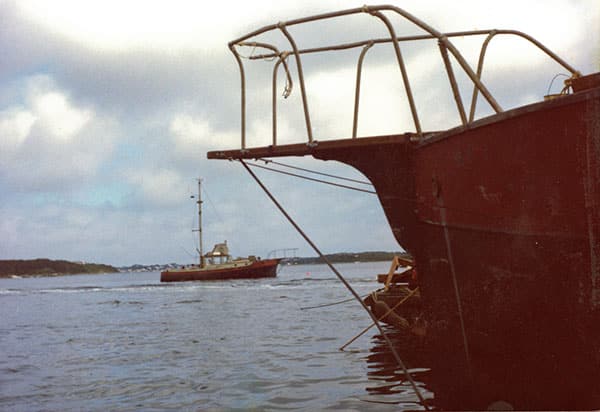
Although both Orcas deserved more than what they got, it’s kind of fitting to think that Orca 2, which was portrayed as being ravaged like a chew toy by a great white, ended up as a bunch of chunks torn off by another set of real sharks — the crazed fans.
